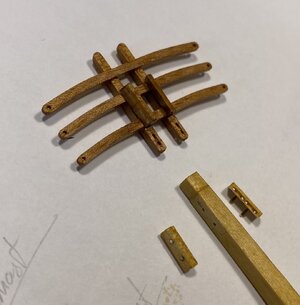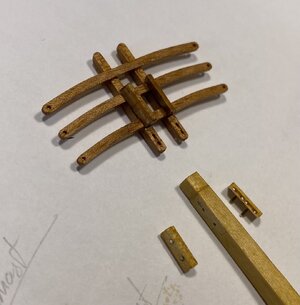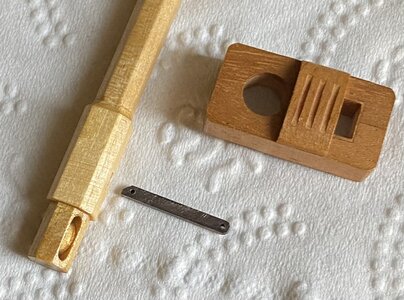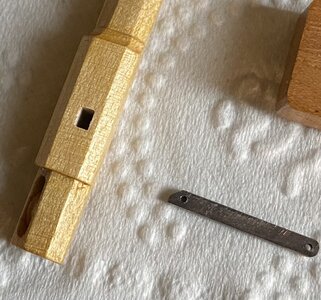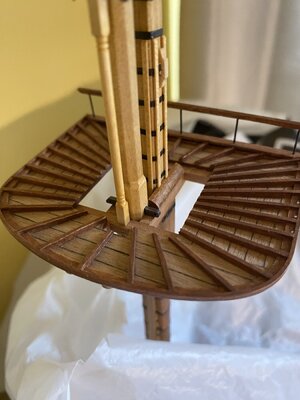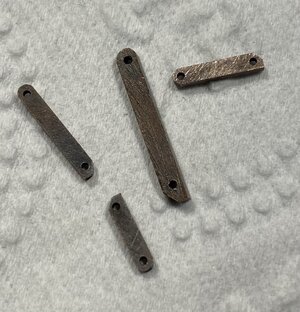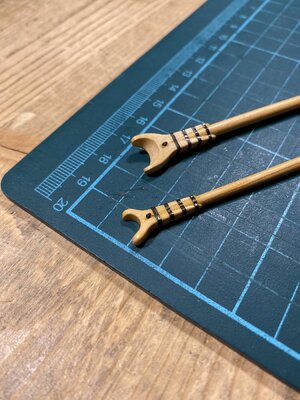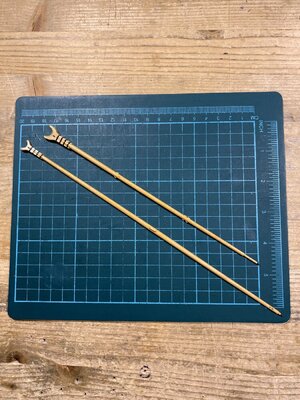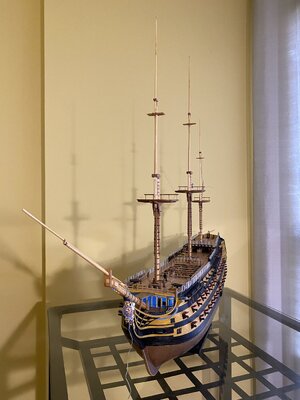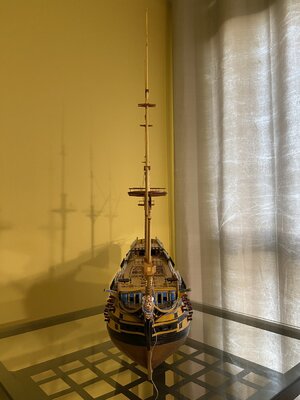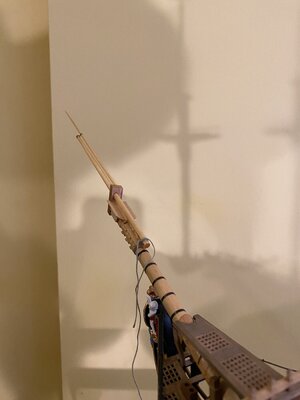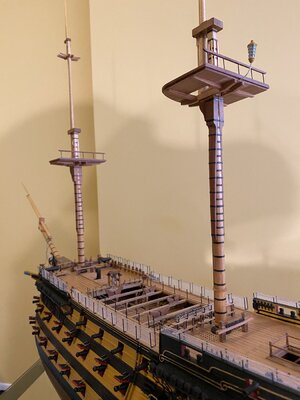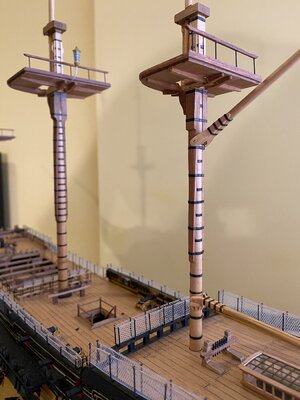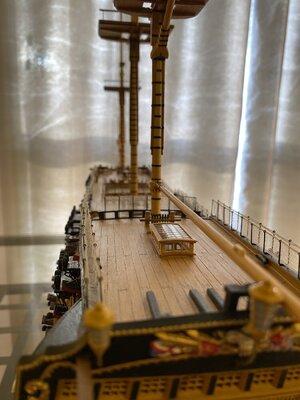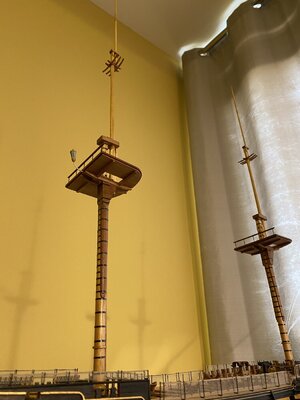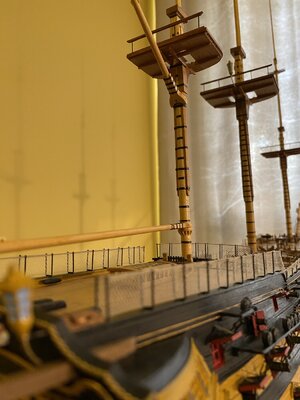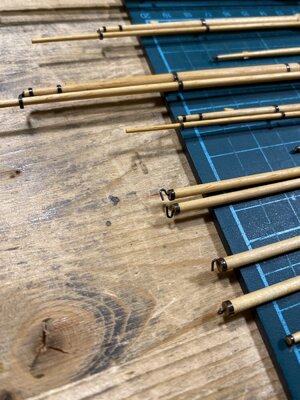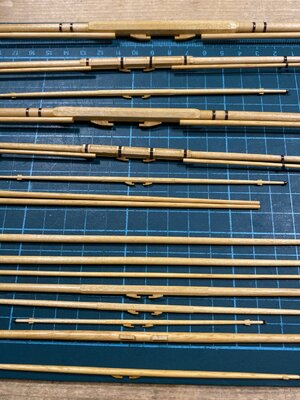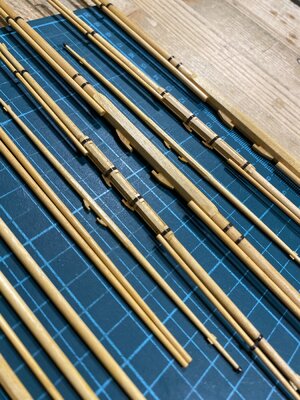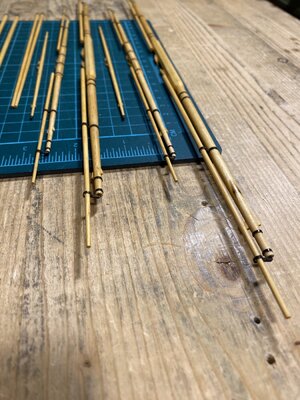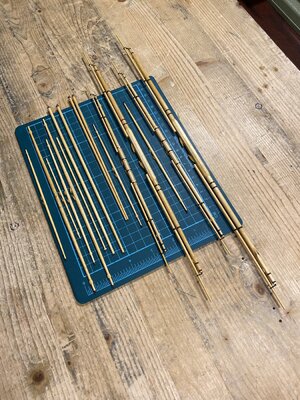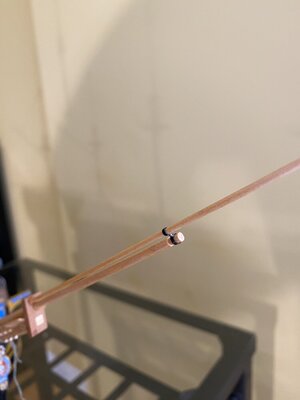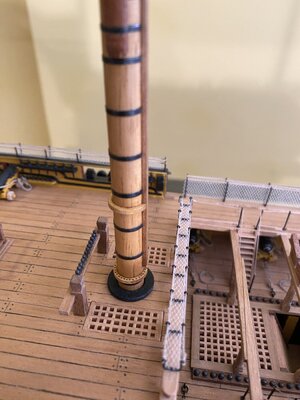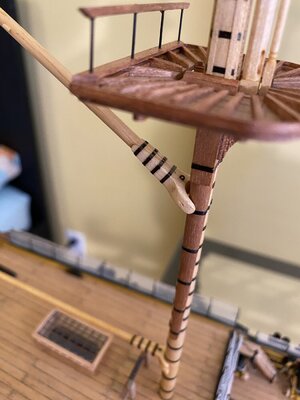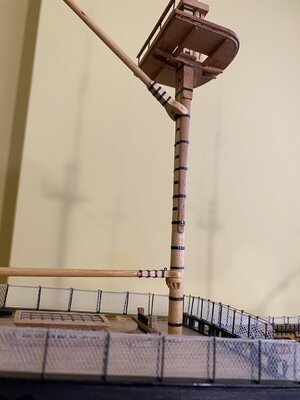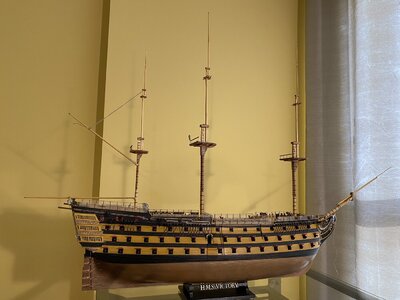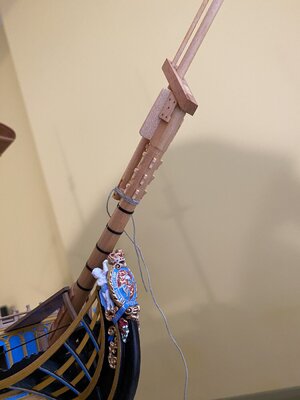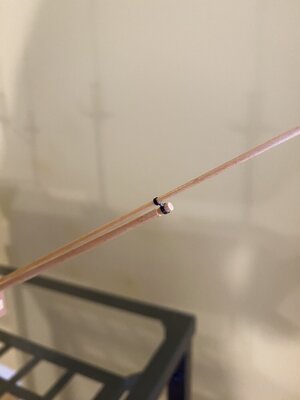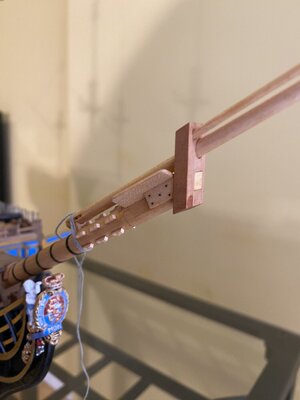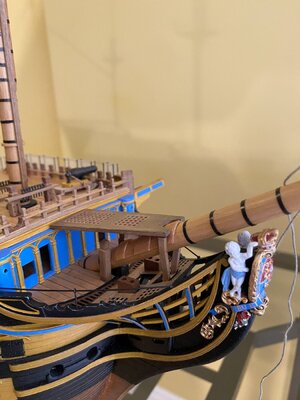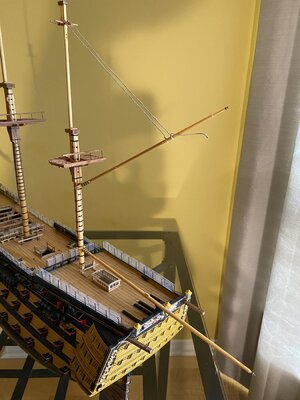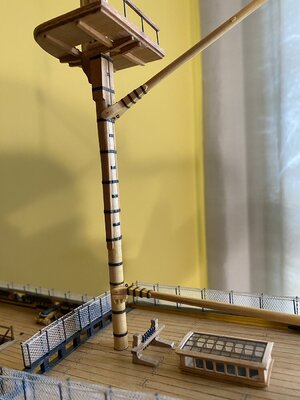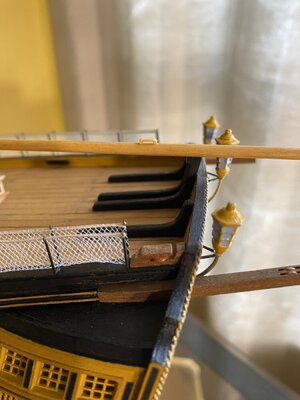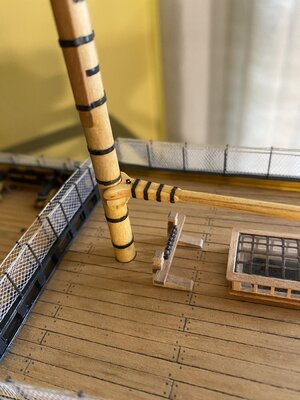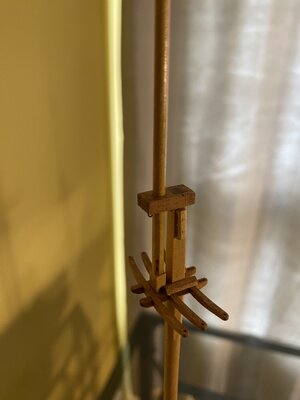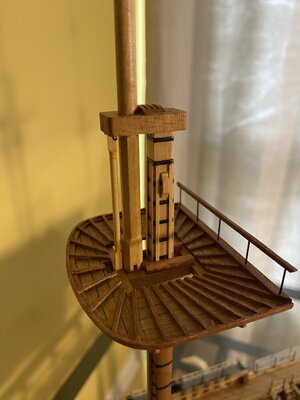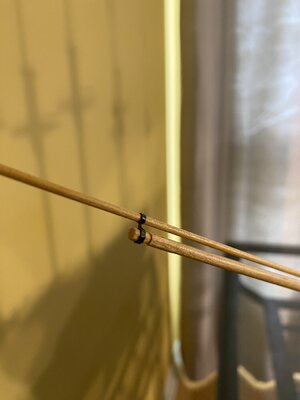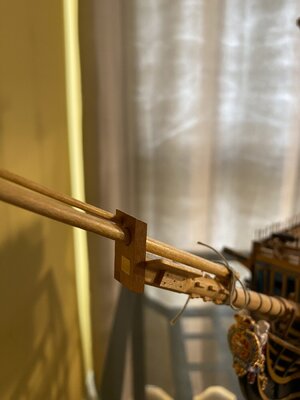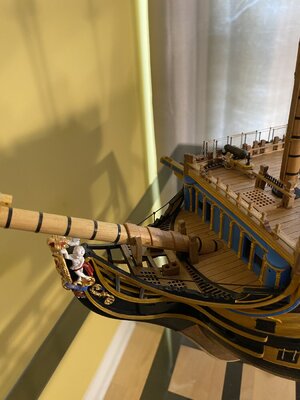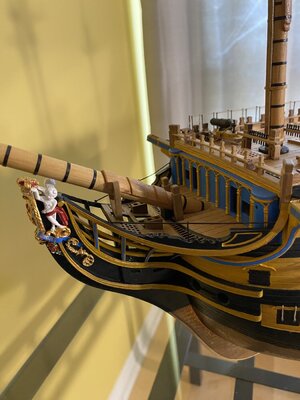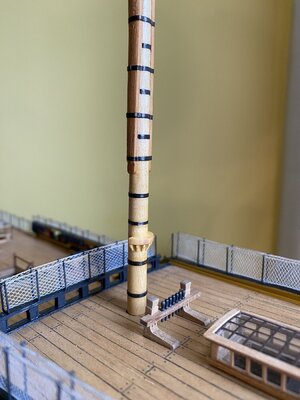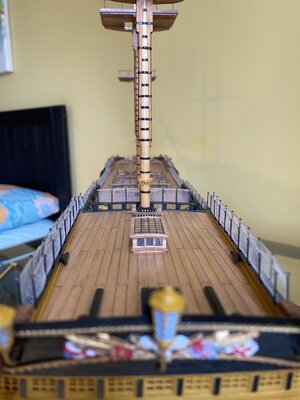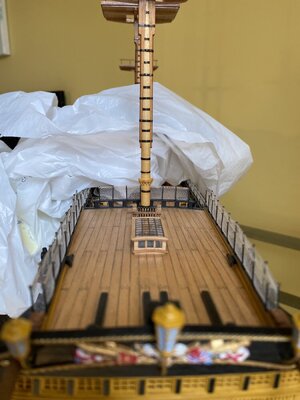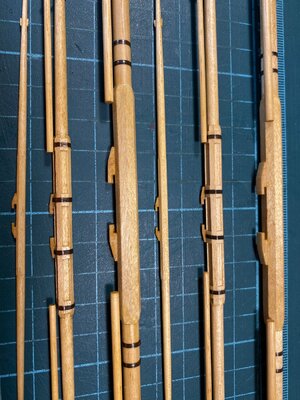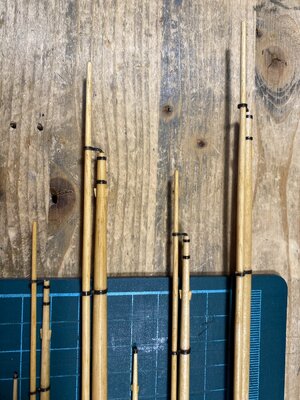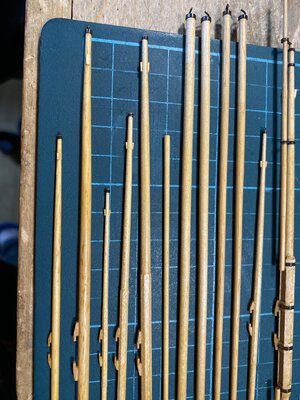-

Win a Free Custom Engraved Brass Coin!!!
As a way to introduce our brass coins to the community, we will raffle off a free coin during the month of August. Follow link ABOVE for instructions for entering.
-

PRE-ORDER SHIPS IN SCALE TODAY!
The beloved Ships in Scale Magazine is back and charting a new course for 2026!
Discover new skills, new techniques, and new inspirations in every issue.
NOTE THAT OUR FIRST ISSUE WILL BE JAN/FEB 2026
You are using an out of date browser. It may not display this or other websites correctly.
You should upgrade or use an alternative browser.
You should upgrade or use an alternative browser.
HMS Victory by Y.T.- Mamoli - 1:90 scale
Question is not addressed to me but let me answer. On my model I used existing current photographs of the Victory hull as a reference. Sometimes I got out of this control and was using my imagination a little bit.how you determined the width of the black and yellow stripes on the hull.
- Joined
- Jun 17, 2021
- Messages
- 3,184
- Points
- 588

Each new assembly you make is a masterpiece of model building in itself and can stand alone as an object of interest and beauty. Well done and VERY instructive.



Crosstrees are lying flat on topmast cheeks or hounds. Trestletrees are lying on top of crosstrees making a very sturdy construction. This was held down by shrouds (port and starboard). All the crosstrees were fitted with wooden bolsters at the masthead, rounded off on the outside edges to prevent the shrouds from chafing on the trestletrees.This is how it looks like taken apart. No glue.
The topmast's heel should be snug, but not loose, and fit between the trestletrees so the whole topmast neither wobbles nor leans to one side. To prevent the topmast from sliding through the top, a wood or iron bar termed the Fid was passed through the heel of the topmast, resting on the trestletrees.
Lastly, to provide support for topmasts, the Cups were used.
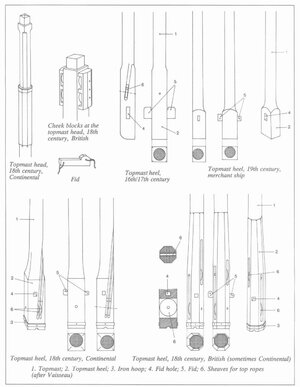
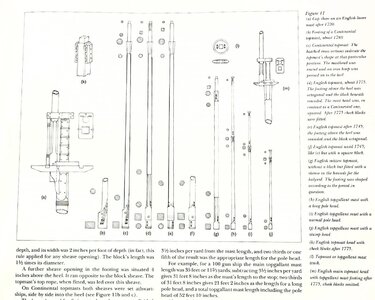
The source is: Wolfram Zu Mondfeld and karl H. Marquardt
Thanks. That's how I did it on my full model. Working on cross-section now....Question is not addressed to me but let me answer. On my model I used existing current photographs of the Victory hull as a reference. Sometimes I got out of this control and was using my imagination a little bit.
Remaining free few hours of this week end I spent making fids and rectangular holes in masts. Broke two drill bits making holes on the fid ends. It appeared drilling on brass breaks bits in no time unless you secure a piece in vise and apply some lubricant. I applied water.
- Joined
- Jun 17, 2021
- Messages
- 3,184
- Points
- 588

A tiny drop of "Gunk" brand cutting oil works wonders. Very smelly and messy to handle. But the stuff soaks into hopelessly rust frozen screw threads or plier joints and the like and given a little time to soak in, does its' intended job very well. Very good as intended when used as a lubricant for cutting metal with metal ( drilling, sawing, milling, etc.) 

Hi YT,Remaining free few hours of this week end I spent making fids and rectangular holes in masts. Broke two drill bits making holes on the fid ends. It appeared drilling on brass breaks bits in no time unless you secure a piece in vise and apply some lubricant. I applied water.
Drilling Brass, the drill bit is best to have a negative rake angle or it will grab when the drill breaks through, this can be done by hand using a fine stone to just break the cutting edge.
Cheers,
Stephen.
- Joined
- Jun 17, 2021
- Messages
- 3,184
- Points
- 588

Great tip. I learn something new and useful tome every day here!Hi YT,
Drilling Brass, the drill bit is best to have a negative rake angle or it will grab when the drill breaks through, this can be done by hand using a fine stone to just break the cutting edge.
Cheers,
Stephen.
- Joined
- Apr 20, 2020
- Messages
- 6,211
- Points
- 738

Wow, BravoFinally I think I am done with ALL masts and spars. Here is what was done.
View attachment 404468
View attachment 404469
View attachment 404471
View attachment 404473
View attachment 404474
View attachment 404476
View attachment 404478
View attachment 404479
View attachment 404481
View attachment 404482
View attachment 404483
View attachment 404485
View attachment 404487
View attachment 404489
View attachment 404490
View attachment 404491
View attachment 404492
you have created amazing masts
- Joined
- Jun 17, 2021
- Messages
- 3,184
- Points
- 588

Absolutely WOW!
My first wooden ship kit back in 1983 was Mamoli's 'Blue Shadow', which, as an introduction to wooden ships, worked out very good for me, despite not finishing her until 2018! I've part built the Mamoli/Dusak Golden Hind, which I've found let down by the paper printed decor strips, I've not used these, instead I painted them on to pre-shaped veneer, then stuck them to the hull.Dusek resurrected the brand with some important improvements, but the whole series of kits really needs to be taken back to the start, redesigned, updated and reengineered. The metal castings need to be remodeled and new molds made, instructions rewritten and put into some reasonably logical, easy to follow order, and especially their approach to hull planking totally overhauled. A novice plunging into one of their kits is in for a rude awakening, and perhaps a life altering experience, possibly being disabused of the notion of ever trying to build a wood ship model from a kit ever again! I speak from personal experience. But perhaps being a glutton for punishment, I am now on my third Mamoli build. A word to the wise: Mamoli kits are for experienced kit bashers and/or scratch builders.
Pete
Therefore, after 40hrs you should have the 600 required!Took me about an hour to make these 16 blocks.
Now a few words regarding to the ship parts finish. Someone may not like parts looking shiny. But I do. That’s it.


